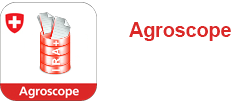Honey bee colonies contain thousands of individuals living in close proximity in a thermally homeostatic nest, creating ideal conditions for the thriving of numerous pathogens. Among the bacterial pathogens, Paenibacillus larvae infects larvae via the nutritive jelly that adult workers feed them, causing the highly contagious American foulbrood disease. Further Paenibacillus species were anecdotally found in association with honey bees, including when affected by another disease, European foulbrood (EFB). However, their pathogenicity remains largely unknown. Our results indicate that Paenibacillus dendritiformis, Paenibacillus thiaminolyticus and newly described Paenibacillus melissococcoides are pathogenic towards honey bee brood and that their virulence correlates with their sporulation ability, which confers them resistance to the bactericidal properties of the nutritive jelly. Our survey occasionally but increasingly detected P. melissococcoides in confirmed and idiopathic cases of EFB but never in healthy colonies, suggesting that this bacterium is an emerging pathogen of honey bee brood. Overall, our results suggest that virulence traits allowing a pathogenic or opportunistically pathogenic habit towards honey bee brood are frequent in Paenibacillus spp., but that their degree of adaptation to this host varies. Our study clarifies the ecology of this ubiquitous genus, especially when infecting honey bees.
Ory F., Dainat B., Würgler O., Wenger F., Roetschi A., Braillard L., Charrière J. D., Dietemann V.
Ecology and pathogenicity for honey bee brood of recently described Paenibacillus melissococcoides and comparison with Paenibacillus dendritiformis, Paenibacillus thiaminolyticus.
Environmental Microbiology Reports, 17, (3), 2025, Articolo e70089.
Download inglese (1030 kB)
ISSN Print: 1758-2229
ISSN Online: 1758-2229
Digital Object Identifier (DOI): https://doi.org/10.1111/1758-2229.70089
ID pubblicazione (Codice web): 59411 Inviare via e-mail










